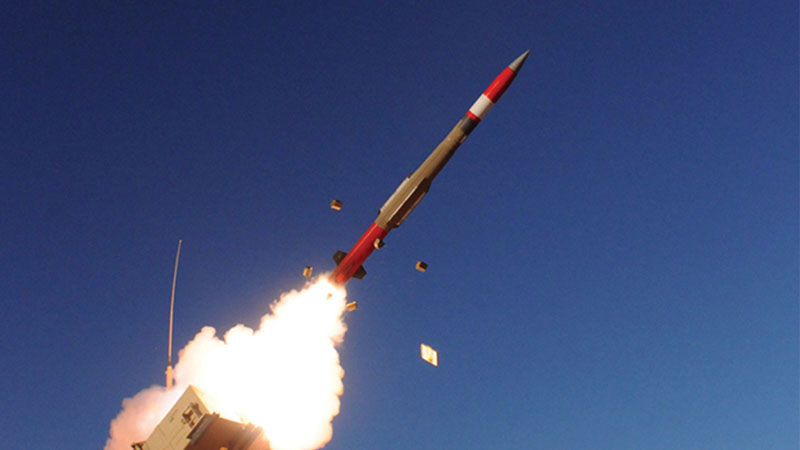Stay Up to Date
Submit your email address to receive the latest industry and Aerospace America news.
The Missile Systems Technical Committee focuses on technologies associated with the design, development, operations, and utilization of strategic and tactical missile systems.
Rising tensions in world hot spots continued motivating the development of missile system technologies this year. Russia’s sale of sophisticated weapons to Iran following the nuclear deal negotiated by the Obama administration and ballistic missile tests by North Korea have prompted renewed interest in air and missile defense systems.
The U.S. Army funded improvements to the Patriot Air and Missile Defense system developed by Raytheon and Lockheed Martin. Among these upgrades are the Patriot Advanced Capability-3 Missile Segment Enhancement, or PAC-3 MSE, a high-velocity hit-to-kill interceptor with a dual-pulse solid rocket motor and larger control fins providing nearly double the range and increased maneuverability. PAC-3 MSE completed several engagements against tactical ballistic missiles, cruise missiles and aircraft over the White Sands Missile Range in New Mexico before being accepted into service in August.
The U.S. Navy tested ship-based air defenses during evaluation of Raytheon’s SeaRAM at the Point Mugu Sea Range in California. SeaRAM combines the Rolling Airframe Missile with the radar of a Phalanx self-defense gun to acquire, track and destroy threats like anti-ship missiles, unmanned aerial vehicles or aircraft. During a May test, SeaRAM successfully detected, tracked and engaged two incoming supersonic cruise missiles using RAM Block 2 missiles to intercept the targets.
Another region of international tension has been the Western Pacific where China and neighboring countries dispute ownership of several island chains, prompting continued investment in anti-ship missiles. A significant accomplishment was the successful completion of operational testing by Raytheon’s Joint Stand Off Weapon C-1 variant. Entering service with the U.S. Navy in June, the JSOW C-1 air-launched missile adds a Link 16 data link capable of receiving target updates during flight to track a moving ship.
Though the first network-enabled weapon in the Navy’s inventory, JSOW will soon be joined by the upgraded Boeing Harpoon Block 2+ anti-ship missile that incorporates the same data link radio to provide improved targeting precision. Harpoon 2+ made its first flight in late 2015 and is expected to reach initial operational capability next summer. Boeing continues improvements with an extended range variant flying nearly twice as far thanks to a new engine and increased fuel capacity.
As armed conflict continues from Syria to Afghanistan, improvements in ground attack weapons are also underway. The United Kingdom declared operational capability of the enhanced MBDA Brimstone 2 missile in July following a successful series of trials at the U.S. Naval Air Weapons Station at China Lake, California. The Royal Air Force tests confirmed an increase in engagement envelope, performance against targets at high off-bore sight angles, and effectiveness of a new warhead against fast-moving armored and nonarmored vehicles.
The U.S. Marine Corps improved its capabilities by introducing a new variant of the Advanced Precision Kill Weapon System in March. Designed by BAE Systems, the system turns unguided 2.75-inch rockets into guided missiles by adding a semi-active laser guidance and control section. The improved kit is modified for use on fixed-wing aircraft to provide a low-cost, low-collateral damage, high-precision attack capability from the service’s Harrier jets.
Two areas of research also suggest future directions for missile systems. The Pentagon has expressed particular interest in high-speed technologies. Building on past flights of the X-51 WaveRider that achieved hypersonic velocities of Mach 5 using a scramjet engine, the U.S. Air Force is accelerating development of a follow-on demonstrator. Interest has also been shown in deploying directed energy payloads aboard cruise missiles. Following the Counter-electronics High-power Microwave Advanced Missile Project that disabled a bank of computers in 2012, researchers look to integrate an improved Raytheon directed energy payload aboard Lockheed’s Joint Air-to-Surface Standoff Missile. ★
Stay Up to Date
Submit your email address to receive the latest industry and Aerospace America news.




